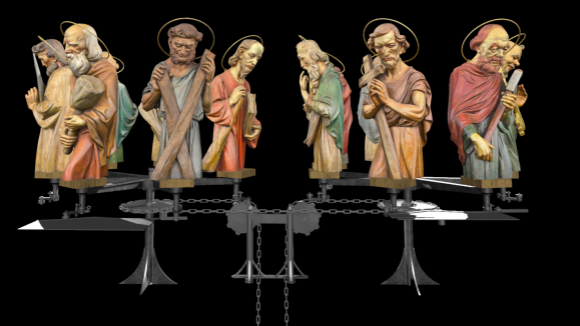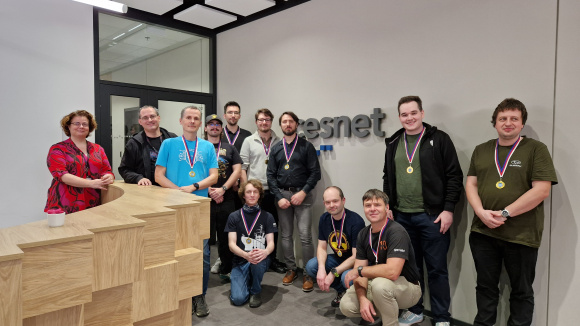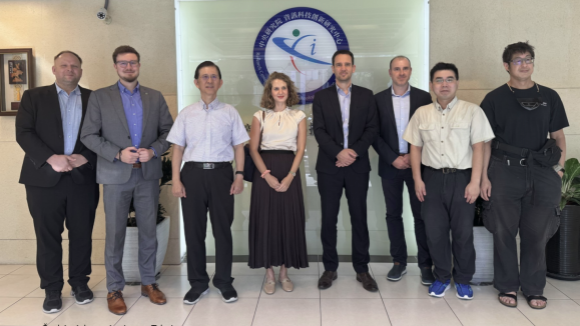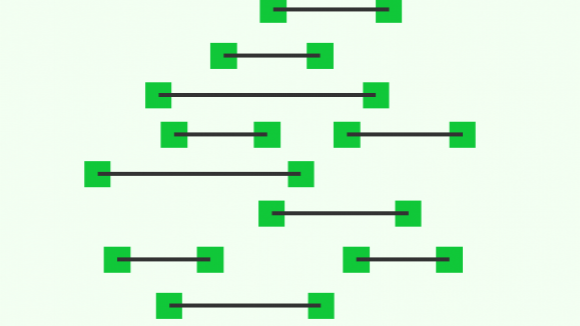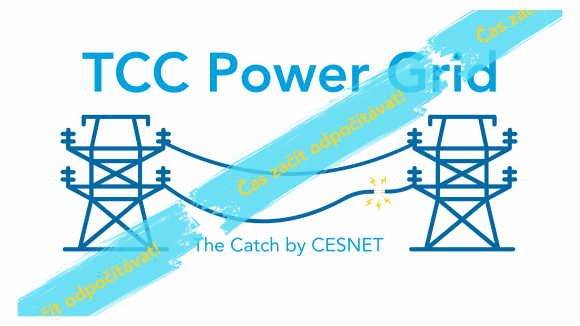Stay in the know
News
8. December 2025
CSNOG 2026: Program a otevření registrací
Co přinese další setkání síťové komunity, které se koná 21.–22. ledna 2026 ve Zlíně? CSNOG 2026 otevřel registraci a zveřejnil program. Podívejte se, co vás čeká, a přijeďte za námi.Program konference připravuje nezávislý výbor, který vybírá nekomerční a technologicky přínosná témata. Všichni přednášející mají vstup na konferenci zdarma. Více informací najdete na www.c4. December 2025
Digitization of the Old Town Astronomical Clock. We reveal the secrets of one of Prague's most famous monuments
The Old Town Astronomical Clock, which has been setting the pace in Prague for centuries, now also exists in digital form. As part of a digitisation project, the Network Applications Technology Department created a detailed 3D kinematic model of the clock's components, offering the public an insight into how this unique machine works.
14. November 2025
Vyhlášení The Catch 2025: Kdo letos zachránil Power Grid?
V úterý 12. listopadu 2025 jsme v pražské kanceláři sdružení CESNET přivítali nejúspěšnější řešitelky a řešitele letošního ročníku soutěže The Catch. Při slavnostním setkání obdrželi pamětní medaile a věcné ceny jako poděkování za svou vytrvalost a vynikající výkony při řešení náročných úloh.
4. November 2025
Česko a Tchaj-wan hledají cesty k bezpečné digitální komunikaci: CESNET se připojil k odborné misi
How can we ensure secure digital communication at a time when quantum computers are beginning to gain ground? Czech and Taiwanese experts sought answers to this question during an October research mission to Taiwan – the first Czech mission focused on post-quantum cryptography. The CESNET association was represented by Josef Vojtěch, an expert in quantum communication and optical networks.
The mission aimed to strengthen cooperation in the field of digital security and share experiences with the latest approaches to network and communication protection. The Czech delegation was led by Jan Rada from the National Cyber and Information Security Agency (NÚKIB), with representatives from the Brno University of Technology and the CESNET association also participating.
9. October 2025
CSNOG 2026: Přihlaste svůj příspěvek nebo se zapojte jako partner
Would you like to share your ideas and experiences in the field of network administration, infrastructure, or cybersecurity that could inspire others? Submit your contribution to the CSNOG 2026 community meeting, which will take place on January 21–22, 2026, at Tomáš Baťa University in Zlín. The Call for Abstracts and Call for Partners are now open, and applications can be submitted until October 31, 2025.
25. September 2025
The Catch 2025 odstartoval
Oblíbená podzimní soutěž v kybernetické bezpečnosti začala 6. října přesně ve 12:00. Letošní ročník s podtitulem TCC Power Grid prověří znalosti hráček a hráčů na scénářích spojených s elektrickou rozvodnou sítí. Kromě hlavních výher čekají na soutěžící ceny až do 50. místa a také speciální bonusy za nejrychlejší řešení či kvalitní write-upy.


